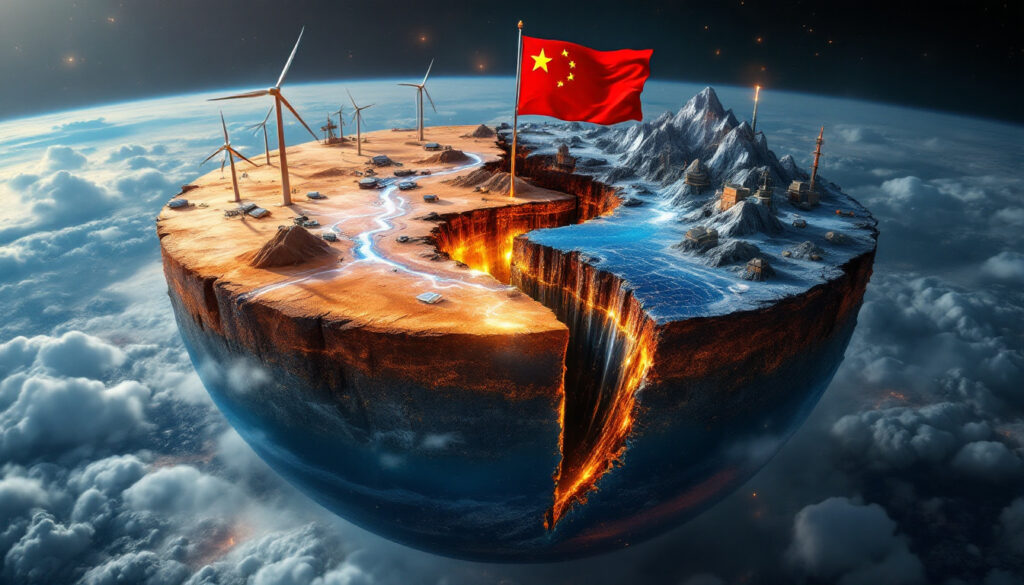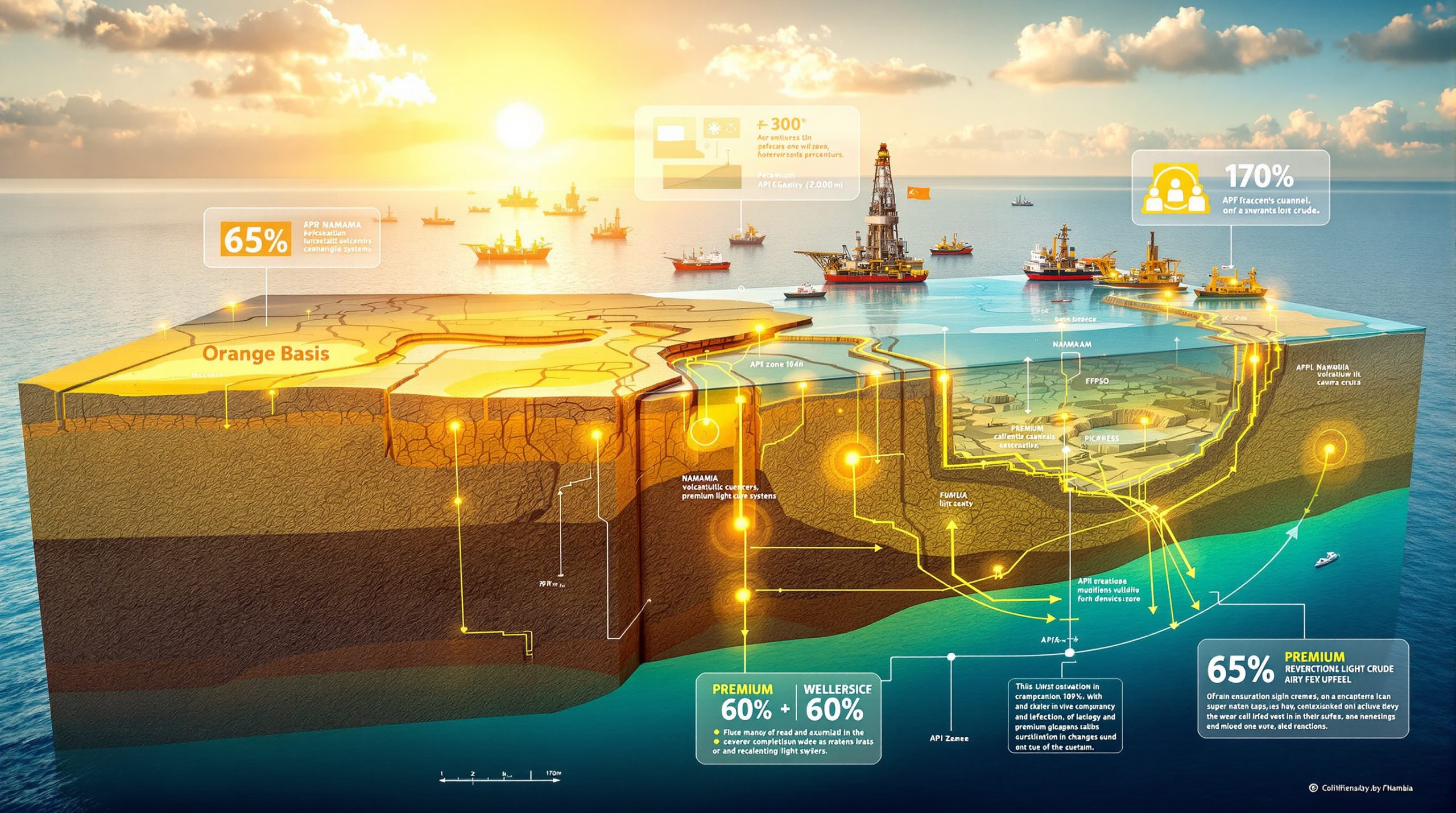Understanding the Geopolitical Landscape in Metals and Mining
The Structural Shift in Global Resource Demand
The global metals and mining industry is experiencing an unprecedented transformation driven by geopolitical tensions. Major economies including the US, EU, and China are increasingly competing for commodity resources, abandoning the efficiency-focused global supply chains of previous decades in favor of security-oriented regional systems. This shift represents a fundamental restructuring of how resources are allocated and consumed worldwide.
National security concerns have become paramount, compelling countries to develop redundant infrastructure systems rather than relying on globalized networks. As each major geography builds out independent systems, we're witnessing the creation of parallel energy supply networks, separate manufacturing bases, and distinct defense systems that all require the same materials.
This transition from efficiency to security has profound implications for metal markets. As one mining executive noted during an industry conference, "We're seeing three separate systems being built where previously one global system sufficed. This triples the demand for upstream components and materials." Understanding these geopolitical market strategies has become essential for investors in the metals and mining sector.
US-China Tensions and Their Market Impact
US-China relations have deteriorated significantly, with metals and minerals becoming strategic assets in geopolitical positioning. Tariffs implemented by both sides are primarily affecting supply chains rather than fundamentally altering demand patterns. The evidence of these disruptions can be observed in global copper markets, where inventories have shifted dramatically between London, Shanghai, and Singapore trading hubs.
Resource nationalism has effectively replaced free trade principles, with both superpowers viewing control of critical minerals as essential to national security. This has resulted in unprecedented government intervention in metals markets, from rare earths to battery metals like lithium and cobalt. Recent China's export restrictions on certain metals have further complicated the international trade landscape.
How Are Tariffs Reshaping the Metals Industry?
Supply-Side Disruptions vs. Demand Concerns
The implementation of tariffs between major economies has created regional supply shortages and inventory imbalances rather than destroying overall demand. The copper market provides a clear illustration of this phenomenon, with inventories shifting between global trading hubs as traders navigate new trade barriers.
These short-term effects are more pronounced on supply chains than on overall demand fundamentals. Markets are adapting through price adjustments and strategic inventory management, creating opportunities for traders who can navigate the new landscape while causing challenges for manufacturers with global supply networks.
Recent data shows that despite tariffs of up to 25% on certain metal products, overall consumption has remained resilient. This suggests that the metal industry is finding ways to absorb or pass on these costs without significant demand destruction.
The Shift from Efficiency to Redundancy
The free trade paradigm of previous decades required only one optimized global system designed for maximum efficiency. In stark contrast, today's geopolitical environment demands separate systems for each major economic bloc, including:
- Independent energy supply networks
- Separate manufacturing bases
- Distinct defense systems
- Self-sufficient market demand
This fundamental shift means redundancy is now more valued than efficiency or profit maximization. Governments are willingly accepting higher costs to ensure security of supply, a development that has significant implications for metal producers and consumers alike.
Industry analysts point to examples like semiconductor manufacturing, where nations are subsidizing domestic production despite significantly higher costs compared to globalized production models. The emergence of a new commodity super cycle is increasingly influenced by these geopolitical factors.
National Security and Critical Minerals
Government Subsidies and Manufacturing Support
Government intervention in metals markets has expanded dramatically, with the US, EU, Japan, and South Korea all implementing substantial subsidies for domestic manufacturing. These programs are effectively offsetting potential demand suppression that might otherwise result from higher costs.
China's long-standing practice of subsidizing metal industries is now being replicated globally. One metals analyst recently observed that concerns about demand suppression are "overplayed" precisely because of this government intervention. The strategic importance of metals production has elevated it to a matter of national security, justifying significant public expenditure.
Western governments have committed over $250 billion to securing domestic supply chains for critical minerals in the past three years alone, creating a floor for demand despite economic uncertainties. These efforts aim to address critical mineral shortages that could impact the global clean energy transition.
Defense Industry as an Emerging Demand Driver
Growing defense spending worldwide is creating new demand sources for metals that operate independently of economic cycles. Infrastructure related to national security—including power grids, shipbuilding, and aerospace—is driving consumption of aluminum, copper, nickel, and specialty metals.
Major commodities are increasingly tied to manufacturing capital expenditure and energy investment with national security implications. Power generation capacity is increasingly viewed as "a new form of currency" in international relations, requiring significant infrastructure development and metals consumption.
Defense budgets worldwide increased by an average of 6.8% in 2023, creating sustainable demand for high-performance alloys and base metals alike. According to research by White Case, geopolitics has firmly taken the driver's seat in shaping mining and metals markets.
China's Economic Recovery and Metal Demand
The Chinese Demand Puzzle
One of the most puzzling aspects of recent metal markets has been China's sustained demand despite significant weakness in its property sector. Chinese property markets lost approximately 50% of demand over three years, which traditionally would have devastated metal consumption.
Yet counterintuitively, metal demand for steel, iron ore, copper, and aluminum has increased during this period. The explanation lies in China's massive investment in upstream power generation, which has offset property sector weakness. China has increased its power generation capacity by approximately 70% since 2020, an extraordinary expansion that requires enormous quantities of industrial metals.
This shift represents a structural change in China's metal consumption patterns, moving from construction-led demand to energy infrastructure-led demand. Accessing reliable global commodity insights has become crucial for investors to understand these changing dynamics.
The Power Generation-Grid Investment Gap
China's rapid expansion of power generation assets has created an imbalance with its grid infrastructure. While the country added 70% more power generation capacity since 2020, power grid investment increased only 5% in 2023 and remains in single digits for the first half of 2024.
This imbalance is now being addressed, with China's State Grid Company exceeding its 500 billion yuan budget by spending over 600 billion yuan to accelerate grid development. Industry experts anticipate a 3-5 year catch-up period for grid infrastructure to connect all the new power assets to the distribution network.
This grid investment phase represents the next wave of metal demand from China's energy transition, particularly for copper, aluminum, and steel components.
China's Energy Investment and Global Metal Demand
China's Energy Transition Strategy
China's energy investments represent one of the largest coordinated energy transitions in history, comparable in scale and importance to the US shale gas revolution. This massive program is shifting China from being a net energy importer toward potentially becoming a net energy exporter in renewable energy technologies.
These investments are creating overcapacity in energy-intensive manufacturing sectors, providing China with a new competitive advantage based on electricity abundance rather than cheap labor. The country's ability to produce low-cost renewable energy components is transforming global supply chains for solar panels, wind turbines, and energy storage systems.
Analysis of China's latest five-year plan reveals that energy self-sufficiency has become a cornerstone of national strategy, with implications for global metal markets that will persist for decades. As IRENA's report on the geopolitics of energy transition highlights, critical materials are at the center of this global power shift.
Export-Driven Demand for Chinese Products
The export orientation of China's manufacturing sector has intensified dramatically. Nearly 100% of Chinese excavators are now manufactured for export, up from just 10% previously. Metal demand is increasingly driven by Chinese-financed overseas projects, particularly in Belt and Road Initiative countries.
A significant shift has occurred in how these projects are financed: ventures previously funded by Western companies with USD are now increasingly funded by Chinese firms using RMB. This creates incremental global metal demand outside China's domestic market while strengthening China's currency internationalization efforts.
Chinese overseas direct investment in mining and infrastructure grew by 23% year-over-year in 2023, reflecting the strategic importance of securing resources abroad.
The Future of Electrification and EVs
China's Competitive Advantage in EVs
China has developed a complete domestic supply chain for electric vehicles from raw materials to final products. Its demonstrated advantage in battery production and systems has positioned Chinese manufacturers like BYD as global leaders, challenging established players like Tesla.
The auto sector exports are viewed within China as a demonstration of manufacturing sophistication, with government support ensuring continued expansion. China now produces over 60% of the world's EVs and controls approximately 75% of battery manufacturing capacity, creating sustained demand for lithium, cobalt, nickel, and copper.
Recent technology breakthroughs in sodium-ion batteries by Chinese manufacturers could further cement their leadership while altering demand patterns for battery metals.
Energy Abundance Driving Manufacturing Shift
The 70% increase in power generation has created an electricity-rich economy in China, fundamentally changing its manufacturing competitiveness. Electricity is replacing cheap labor as China's key competitive advantage, enabling energy-intensive manufacturing to flourish when it is declining elsewhere.
This represents a structural long-term shift toward electrification across industries, with implications for copper, aluminum, and rare earth elements. China's ability to produce renewable energy at scale has lowered electricity costs for its manufacturing sector, creating a virtuous cycle of competitiveness in metal-intensive products.
Industry forecasts suggest China's electricity production could double again by 2035, further strengthening its position in metals-intensive manufacturing.
Key Future Trends in Metals and Mining
Resource Competition and Commodity Hoarding
Market participants should prepare for increasing illiquidity in commodity markets as strategic stockpiling grows. Multiple demand drivers—energy transition, European rearmament, supply chain security—are converging to create unprecedented pressure on metal supplies.
Supply constraints will intensify as materials are taken off markets for strategic reserves, creating the potential for price volatility in less liquid markets. China has already established strategic reserves for dozens of metals and minerals, a practice now being adopted by Western governments and corporations concerned about supply security.
Recent satellite imagery analysis has identified substantial increases in Chinese warehousing capacity dedicated to metal storage, suggesting an acceleration of strategic stockpiling programs.
Hong Kong's Emergence as a Commodity Trading Hub
Significant efforts are underway to position Hong Kong as a major regional commodity center, aligning with China's resource security nationalism. This initiative represents a potential shift in global commodity trading patterns, as RMB-denominated contracts gain importance.
Hong Kong's strategic positioning aims to maintain competitiveness in the energy sector while providing China greater influence over price discovery in key metal markets. New warehousing facilities, trading platforms, and regulatory frameworks are being developed to challenge London and Singapore's dominance in metals trading.
The Hong Kong Exchanges and Clearing Limited reported a 36% increase in metals contracts traded in 2023, indicating growing momentum for this strategic initiative.
FAQ: Geopolitics and the Metals & Mining Industry
How are US tariffs affecting the metals industry?
Tariffs are primarily causing supply disruptions rather than demand destruction. They're creating regional imbalances in metal availability, with evidence showing inventory shifts between major trading hubs like London, Shanghai, and Singapore as markets adjust to new trade barriers. Companies are adapting by reconfiguring supply chains and, in some cases, relocating production to avoid tariffs, but overall demand remains resilient due to government support programs.
Why is metal demand in China increasing despite property market weakness?
China has invested massively in upstream power generation, adding 70% more capacity since 2020. This energy sector investment has offset weakness in the property market. Additionally, China is financing overseas projects that create incremental metal demand globally. The transformation of China's economy from property-led growth to energy infrastructure and export manufacturing has fundamentally altered its metal consumption patterns.
What is driving the structural increase in resource demand globally?
Each major economic region is building redundant systems for energy, manufacturing, markets, and defense rather than relying on global supply chains. This shift from efficiency to security-focused redundancy is creating multiple sources of demand for the same resources. National security concerns have elevated metals from commodities to strategic assets, changing how governments approach resource allocation and security.
How will the energy transition be affected by resource nationalism?
The energy transition will likely progress at different rates across regions, with China maintaining momentum while Western economies face higher costs due to reshoring requirements. However, government subsidies in Europe and North America will offset some of these challenges. Meanwhile, defense spending and infrastructure security investments will compensate for any slowdown in renewable energy deployment in Western markets, sustaining overall metal demand.
Looking to Capitalize on the Next Major Mineral Discovery?
Stay ahead of the market with Discovery Alert's proprietary Discovery IQ model, which delivers instant notifications on significant ASX mineral discoveries, transforming complex geopolitical and market data into actionable investment opportunities. Understand why major mineral discoveries can lead to extraordinary returns by exploring Discovery Alert's dedicated discoveries page.




